When it comes to running shoes, finding the perfect fit is essential for both performance and injury prevention. That’s why many runners ask, “Do you size up for running shoes or stick to your regular shoe size?”
In this article, we will explore the importance of proper shoe fit for runners, discussing what happens when the shoes are too small or too big.
The Importance of Proper Shoe Fit for Runners
Choosing the right size for your running shoes is crucial because it directly impacts your comfort, support, and overall running experience. Ill-fitting shoes can lead to a range of issues, from discomfort and blisters to more severe injuries.
On the other hand, a shoe that fits properly will provide the necessary support and cushioning, allowing you to run with confidence and minimize the risk of injury.
What Happens When Your Running Shoes Are Too Small
When running shoes are too small, they can cause a host of problems. Tight shoes can lead to painful blisters, calluses, and corns due to excessive friction and pressure on your feet.
Cramped toe boxes can also result in toe deformities and toenail issues. Besides, inadequate toe space can affect your balance and stability, potentially leading to tripping or falling while running.
What Happens When Your Running Shoes Are Too Big
On the other hand, running shoes that are too big can also pose problems. Loose-fitting shoes may result in your foot sliding inside the shoe, leading to friction and blisters.
Additionally, a lack of proper support and stability can increase the risk of ankle sprains or other foot injuries. Excessive movement within the shoe can cause discomfort and impact your running efficiency.
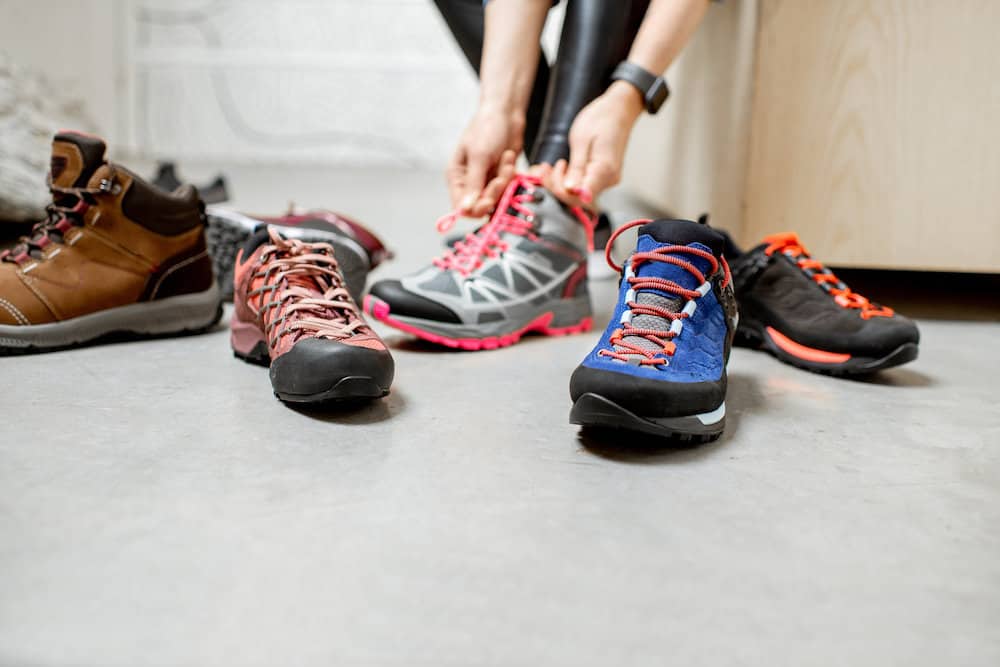
Do You Size Up for Running Shoes?
Determining the correct size for running shoes is a common concern among athletes. While some individuals opt to size up for various reasons, it is important to weigh the potential benefits and drawbacks of such a decision.
When considering whether to size up for running shoes, it is crucial to carefully evaluate these factors. Seeking expert advice, trying on different sizes, and considering personal preferences can assist in making an informed decision regarding the appropriate shoe size for running.
What Are the Benefits of Sizing Up?
Here are the benefits you can expect from selecting running shoes that are one size bigger than your regular size:
- More Room for Your Toes To Spread Out
Sizing up provides additional space for your toes to spread naturally during running. This can be advantageous for those with wider feet or individuals who prefer a more expansive toe splay, promoting better stability and balance.
- Reduced Chance of Blisters
Shoes that are too small can create friction and pressure, leading to uncomfortable blisters. By sizing up, you can minimize the likelihood of developing these painful skin irritations, improving your overall running experience.
- Enhanced Comfort
Opting for a larger size can result in a more comfortable fit for some runners. That’s because looser shoes offer a sense of freedom, reducing feelings of tightness and discomfort that may arise from a snugger fit.
What Are the Drawbacks of Sizing Up?
Here are reasons why some runners do not recommend sizing up:
- Potential Looseness
Sizing up may lead to a shoe feeling too loose, compromising the support and stability necessary for running. What’s crucial is to strike a balance between providing ample toe room and ensuring a secure fit that properly supports the feet.
- Increased Risk of Tripping
Wearing shoes that are too big can raise the risk of tripping or stumbling during running. Excessive movement within the shoe can affect balance and stability, necessitating a secure fit to minimize such risks.
- Reduced Support
Properly fitting shoes offer specific support and cushioning to protect the feet and absorb shock while running. That said, oversized shoes may not offer the same level of support, potentially impacting performance and increasing the likelihood of discomfort or injuries.

How To Choose the Right Running Shoe Size
Before choosing the right shoe size for running, it is crucial to accurately measure your foot size. Follow these steps to measure your feet:
Step 1: Find a flat surface and place a piece of paper on it.
Step 2: Stand on the paper with your heel against a wall.
Step 3: Trace the outline of your foot onto the paper.
Step 4: Use a ruler to measure the length from the back of your heel to the longest toe.
Step 5: Repeat the process for the other foot as well, as foot sizes can vary.
By measuring your feet, you can determine the appropriate shoe size that provides a comfortable and secure fit.
Factors to Consider When Choosing a Shoe Size
When selecting the right shoe size for running, several factors should be taken into account. Also, getting fitted at a specialized running store or consulting with a knowledgeable professional can provide valuable insights and recommendations based on your specific needs.
1. The type of running you do
The distance, terrain, and intensity of your runs can impact the shoe size you need. Longer distances may require a slightly larger size to accommodate foot swelling, while trail running might benefit from a more secure fit.
2. The width of your foot
Consider the width of your foot when choosing a shoe size. Some shoe models offer different width options, ensuring a more customized fit for your specific foot shape.
3. Your arch type
Understanding your arch type can help you determine the appropriate shoe size and support level. Flat-footed individuals may need additional arch support, while those with high arches may require more cushioning.
4. Your personal preferences
Everyone has different preferences when it comes to shoe fit. Some runners prefer a snugger fit for better responsiveness, while others prioritize more toe room for comfort and natural foot movement. Consider what feels best for you and your running style.
5. Pronation
Another important factor to consider when choosing the right shoe size for running is your pronation pattern.
Pronation refers to the natural inward rolling motion of the foot during the gait cycle. Understanding your pronation type can help you select a shoe size that provides the appropriate support and stability.
- Neutral Pronation
If you have a neutral pronation pattern, your foot rolls inward slightly but remains aligned properly. Most runners with neutral pronation can choose from a wider range of shoe options. Select a shoe size that offers a comfortable fit and matches your foot width and arch type.
- Overpronation
Overpronation occurs when the foot rolls excessively inward during the gait cycle. This can lead to issues such as flat feet, collapsed arches, and increased risk of injuries.
If you overpronate, consider choosing a shoe size that provides stability and motion control features. Look for models with structured support, such as medial posts or dual-density midsoles, to help correct the inward rolling motion.
- Underpronation (Supination)
Underpronation, or supination, is characterized by insufficient inward rolling of the foot. This places extra stress on the outer edge of the foot during running.
If you under pronate, select a shoe size that offers cushioning and flexibility. Look for shoe models with ample shock absorption and a neutral to slightly curved shape to promote a more efficient stride.
How To Properly Try on Running Shoes
Trying on running shoes is essential to ensure the correct fit. Here are some tips for trying on running shoes:
- Try shoes on in the afternoon. Feet tend to swell throughout the day, so trying on shoes in the afternoon ensures a more accurate fit.
- Wear appropriate socks. Wear the type of socks you typically use for running when trying on shoes. This will give you a better idea of how the shoes will feel during your runs.
- Test different sizes. Start with your measured size and try on shoes that are a half size larger and a half size smaller. Walk or jog around the store to assess the fit and comfort of each size.
- Check for proper length and width. Make sure there is enough space (about a thumb’s width) between your longest toe and the end of the shoe. The shoe should also provide a snug but not tight fit around the width of your foot.
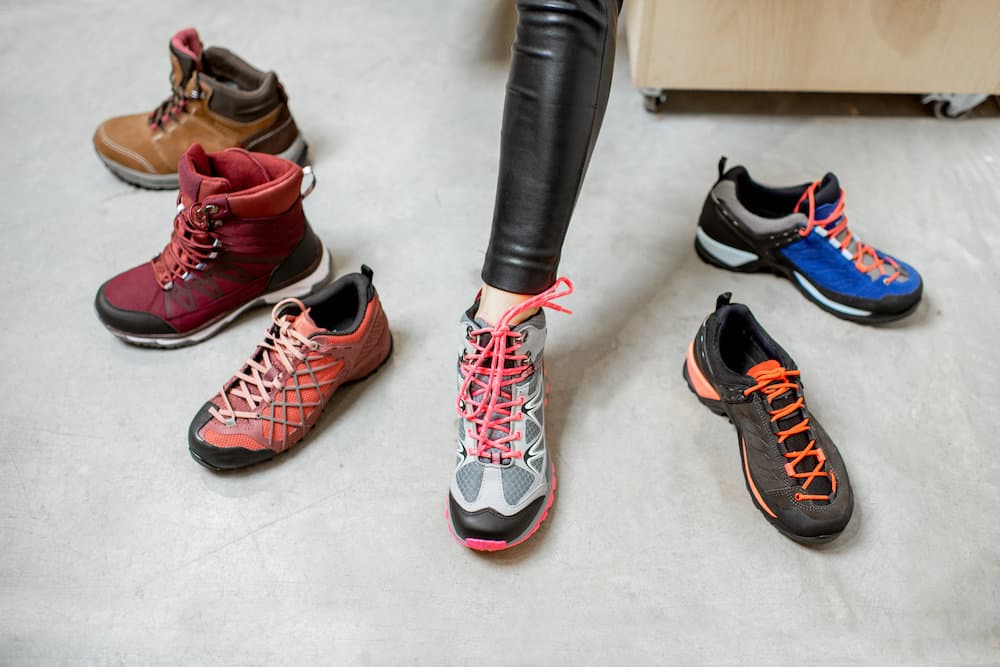
FAQs About Running Shoe Sizes
1. Should running shoes be one size bigger?
Running shoes do not necessarily need to be one size bigger for everyone. The appropriate shoe size can vary depending on individual factors such as foot shape, running style, and personal preferences.
While some individuals may find that sizing up by half a size or even a full size provides a more comfortable fit, it is not a universal rule. It is important to measure your feet accurately, try on different sizes, and consider factors like toe room, width, and overall comfort.
Consulting with experts or getting fitted at a specialized running store can also provide valuable guidance in finding the appropriate shoe size.
2. Should you size up or down in runners?
Deciding whether to size up or down when buying running shoes depends on individual factors. It is generally recommended to try on different sizes to find the most comfortable and supportive fit.
Some runners may prefer a slightly larger size to accommodate foot swelling during long runs or to allow for a more natural toe splay. Others may opt for a snugger fit for better responsiveness and control.
Ultimately, the best approach is to try on different sizes and models, walk or run in them, and assess how they feel on your feet. Pay attention to factors like heel slippage, toe room, and overall comfort to determine whether sizing up or down is more suitable for you.
3. Should running shoes be tight or bigger?
Running shoes should ideally provide a comfortable and secure fit rather than being excessively tight or too big. A properly fitted running shoe should hold the foot securely without causing discomfort or constriction.
It is important to have enough room in the toe box to allow for natural toe movement and prevent friction or blisters. At the same time, the shoe should offer a snug fit around the midfoot and heel to ensure stability and support during running.
Striking the right balance between comfort and a secure fit is crucial in choosing running shoes.
4. Does 0.5 shoe size make a difference?
A 0.5 shoe size difference can indeed make a noticeable difference in the fit and feel of running shoes. Even a small difference in shoe size can affect comfort, support, and overall running experience.
For some individuals, going up or down by half a size can provide the ideal fit, addressing specific foot characteristics or personal preferences. It is important to try on shoes in both your measured size and the half-size difference to assess how they feel on your feet.
Consider factors such as toe room, width, and overall comfort to determine whether a 0.5 shoe size difference makes a significant impact for you.
Sizing up or Sticking to Your Regular Size?
Choosing the right shoe size for running is vital for optimal comfort, support, and performance. So, do you size up for running shoes or not?
By accurately measuring your foot size, trying on different sizes, and considering factors such as the type of running, foot width, arch type, and personal preferences, you can decide whether sizing up will benefit you and your running style.
Whether you decide to size up or stick to your regular size, prioritizing the right fit will ensure a comfortable and supportive running experience. Take the time to find the ideal shoe size that caters to your unique needs so you can enjoy your runs with confidence!

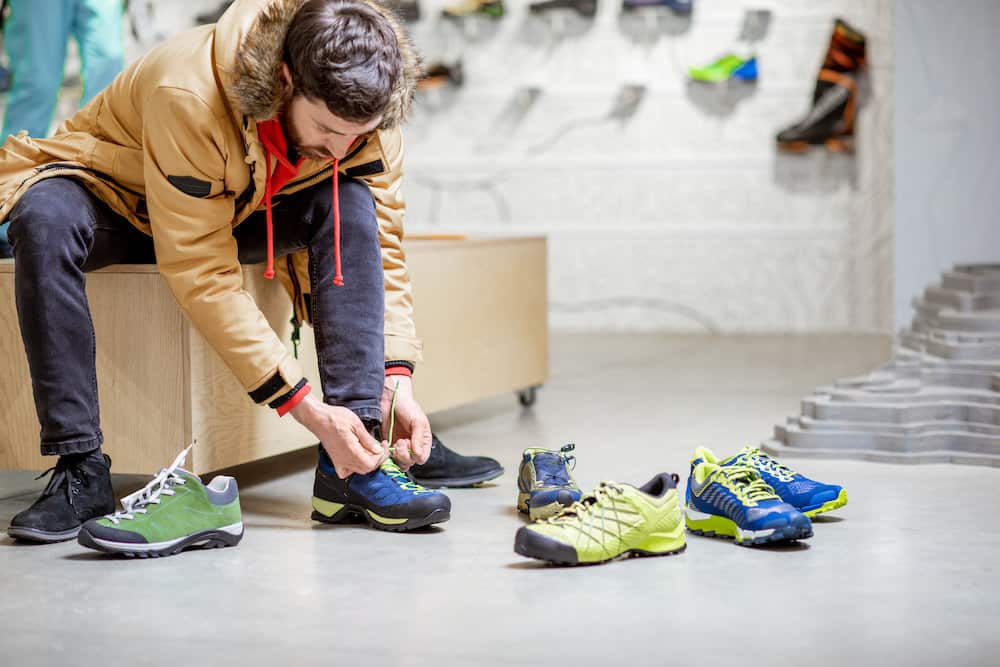

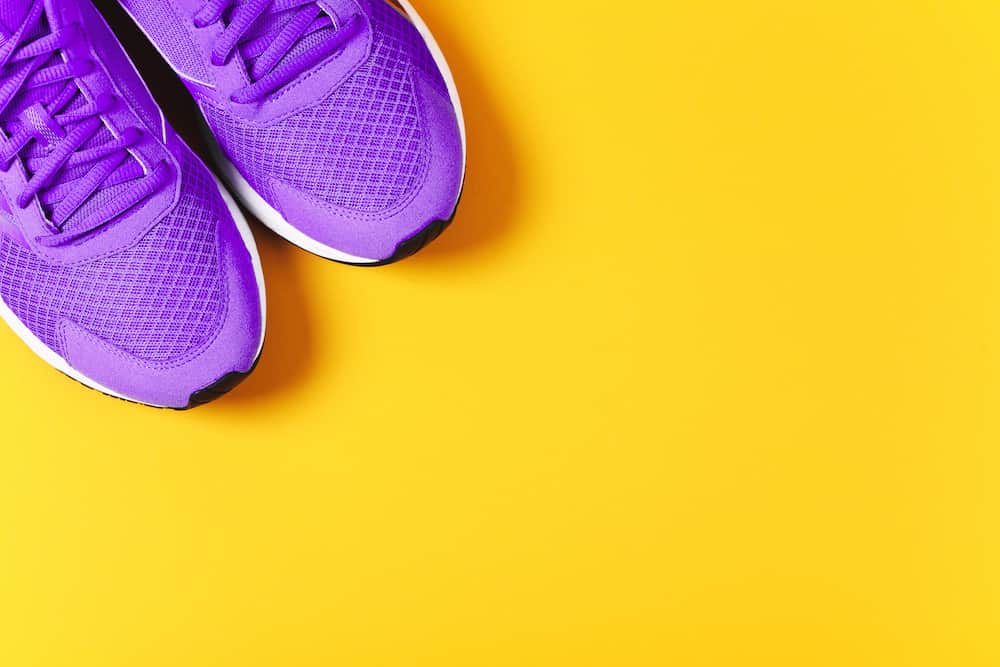


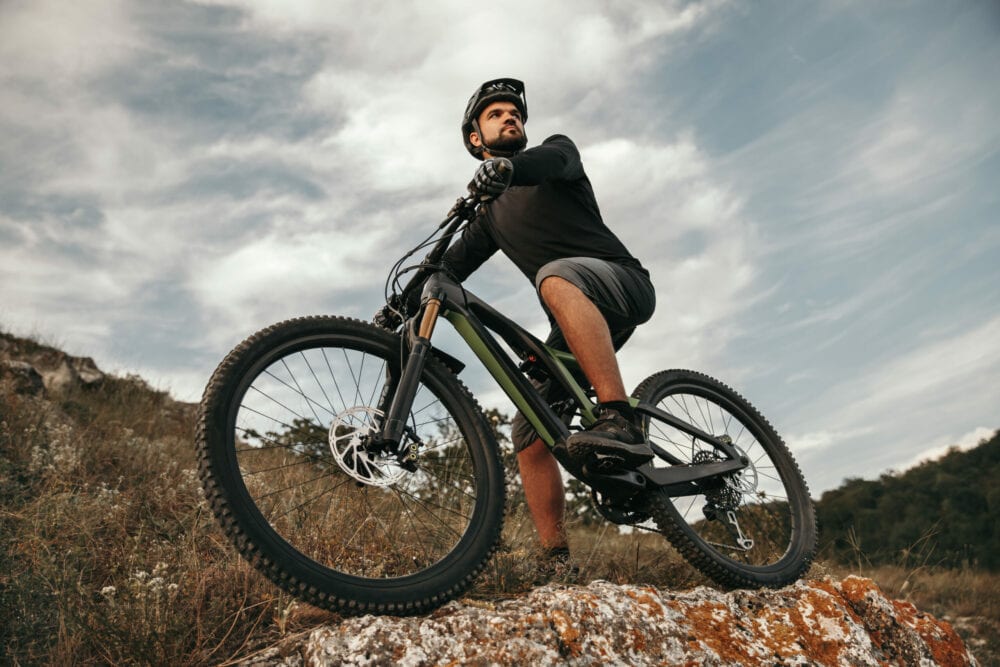







Great article on running shoe fit! I’ve struggled with running for years due to painful shin splints. I’ve always assumed it was my running gait, but now I’m thinking my shoes play a bigger role in my struggle than I thought. Finding the right shoe has always been challenging because I have skinny feet. Your insights were really helpful, but I still have a few questions:
How can I determine my foot type to find the right level of arch support in a running shoe?
I’ve heard about pronation and how it affects running gait. How do I know if I overpronate or under pronate, and what kind of shoes should I look for?
What about durability? How long can I expect a good pair of running shoes to last before replacing them?
Thanks again for the informative article, and I’m looking forward to upgrading my running shoe game with your advice!
Hi, Maricella, and thank you.
Thank you for your kind words.
The best way to determine your foot type is to wet your feet and then step on paper for 10 seconds. Once you have selected your gait and foot type, you can choose the right running shoes that suit you best.
As it says in this article:
If you are flat-footed, choose motion-control shoes. These shoes have broad and straight shapes, so your feet get maximum control and support. Choose neutral cushioned shoes if you have a high arch and tend to supinate. It will absorb the impact of your step and will give you stability.
Overpronation is a condition where your foot rolls inwards excessively when landing. In time, this would result in injuries. This article explains well what overpronation shoes are.
About the durability are so many factors that come in that the answer is always built on each person. Do you use it often, are you trail running, running on concrete, and then different body types? Most brands say between 3-500 miles, some 200. The midsole plays there the biggest factor as it has big effect on the shoes.
But in my opinion, it is very difficult to say some numbers because of the factors I start talking about. Talking with a designer about it has convinced me that my feeling is probably right about it.
Great to hear about the benefit of the article too.
Don’t hesitate to contact me to help you with anything else or if you have any questions.
As a novice runner who usually runs around 10 miles per week, I recently came across your blog post discussing whether to choose a larger size for running shoes or stick to my regular size. I found your post to be extremely informative, as I now understand the importance of selecting the correct shoe size for optimal comfort, support, and overall running experience.
I would like to know how significant a 0.5 difference in shoe size can be in terms of comfort and support, particularly for a beginner runner like myself.
Hi, Michael Toback, and thank you.
Thank you for your kind words.
It happens many times when I test shoes that it is so close to fit. But it is a little bit too narrow or too long so my toes do not fall the grip. In these cases, the slight 0,5 difference makes many times all the difference.
Great to hear about the benefit of the article too.
Don’t hesitate to contact me to help you with anything else or if you have any questions.